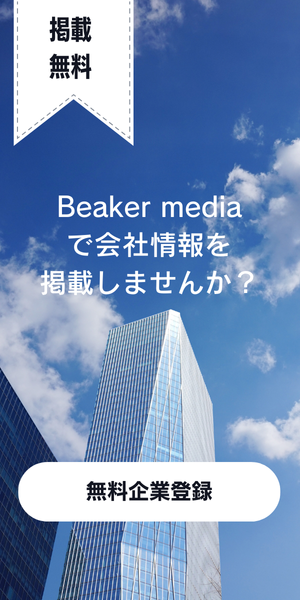表示名称成分詳細
リンゴ果実エキス
成分番号(JP number): 560843
- INCI
- PYRUS MALUS FRUIT EXTRACT, MALUS DOMESTICA FRUIT EXTRACT
- 定義(Description)
- 本品は、リンゴ Pyrus malus の果実のエキスである。[Malus domestica]、[Malus pumila]
- 日本の規制情報(Japanese regulation information)
- -
- 中文inci(CN/中国名称)
- 苹果(PYRUS MALUS)果提取物, 苹果(MALUS DOMESTICA)果提取物
- 中国の規制情報(Chinese regulation information)
- (苹果(PYRUS MALUS)果提取物)【已使用化妆品原料目录(2021年版)】Maximum Historical Usage in Rinse-off Cosmetics(%): (none), Maximum Historical Usage in Leave-on Cosmetics(%): 17.722, (苹果(MALUS DOMESTICA)果提取物)【已使用化妆品原料目录(2021年版)】Maximum Historical Usage in Rinse-off Cosmetics(%): (none), Maximum Historical Usage in Leave-on Cosmetics(%): 5
- 韓国inci(KR/ハングル/성분명)
- -
- CAS No.
- EC No.
- EUの規制情報(Restriction/Annex/Ref#)
-
原料情報
リンゴ果実エキス / PYRUS MALUS FRUIT EXTRACT, MALUS DOMESTICA FRUIT EXTRACT
リンゴ果実エキスとは
リンゴ果実エキスとは、バラ科リンゴ属の落葉高木で、リンゴ(Malus pumila = Malus domestica = Pyrus malus)の果実からBGまたはPGで抽出して得られる植物エキス(抽出物)です。
リンゴは、4〜5月頃になると白または薄紅の花が咲き、8〜11月に果実が実り、収穫されます(1)。
リンゴはコーカサス、小アジア地方が原産地として有力視されており、欧州やインド北部を経て中国に入ったと考えられています(2,3)。中国には小果のリンゴが原生したと考えられており、この小果のりんごがが平安時代に日本に渡来したと推定されています(2)。
亜寒帯、亜熱帯、温帯の地域でしか栽培しにくいため、主にアメリカや中国、インド、イラン、ポーランドなどで栽培されています(1,2,3,)。
日本では、明治5年(1872年)頃からリンゴの栽培が本格化しはじめ、現在では青森県を中心に長野県や東北地方など冷涼な気候の地域で栽培されています(2,4)。
リンゴ果実エキスは天然由来の成分であることから、収穫された地域、温度や湿度、抽出方法によって含まれる成分が多少変わりますが、主な組成成分は「フルクトース」「グルコース」「ソルビトール」「スクロース」「リンゴ酸」「クエン酸」で構成されています(2,5)。
リンゴ果実エキスは、糖質に分類される単糖(フルクトース、グルコース、ソルビトール)や少糖(スクロース)などを多く含んでいるため、表皮を柔軟化することによる保湿作用が期待できます。リンゴ果実エキスの「保湿効果」を目的として、スキンケア製品やメイクアップ化粧品、ボディケア製品など多くの化粧品に配合されています(2,5,6,7)。
また、リンゴ果実エキスは、複合原料として使われていることも多く、他の植物エキス混合されている「フルーツリンクルプロテクトエッセンス」が原材料である場合、特徴として
・表皮の角化細胞の増殖を促すことによってターンオーバーの向上させる作用
・シミの原因であるメラノサイトを活性化させる因子の発現を抑制することによって色素沈着を防ぐ作用
・h-BD3の発現を促すことでニキビができるのを抑え、ターンオーバーを促進させる作用
があります。
その他にもリンゴをモチーフにした製品に香り付けとして配合されていることもあります。
リンゴ果実の多くは、果物として生食用で用いられ、そのほか焼きリンゴ、アップルパイ、りんごジャム、りんごジュース、フルーツサラダ、果実酒などに用いられています(2)。
皮膚刺激性および皮膚感作性(アレルギー性)について
各試験データによると、共通して皮膚一次刺激および累積刺激なしと報告されているため、一般的に皮膚刺激性についてはほとんどないという可能性が高いです。
ただし、食品でアレルギーがある場合は控えることをおすすめしています(8)。
眼刺激性について
各試験データによると、共通して眼刺激性なしと報告されているため、一般的に眼刺激性についてはほとんどないという可能性が高いです(8)。
参考文献
- 田中孝治(1995)『効きめと使い方がひと目でわかる 薬草健康法』講談社〈ベストライフ〉、164頁
- 杉田 浩一, 他(2017)「りんご」新版 日本食品大事典,834-839.
- 中央果実協会(2019)「世界の主要果実の生産概況」
- りんご大学(-)「日本国内生産量」
- 森 健, 他(1967)「果実の有機酸組成に関する研究」日本食品工業学会誌(14)(5),187-192.
- 鈴木 一成(2012)「リンゴエキス」化粧品成分用語事典2012,353.
- 宇山 侊男, 他(2020)「リンゴ果実エキス」化粧品成分ガイド 第7版,153.
- Cosmetic Ingredient Review(2016)「Safety Assessment of Apple-derived Ingredients as Used in Cosmetics」Final Report.
リンゴ果実エキスの配合目的
皮表柔軟化による保湿作用
リンゴ果実エキスの安全性情報
- リンゴ果実エキスは、外原規2021規格の基準を満たした成分が収載される医薬部外品原料規格2021に収載されています(1)。
- Cosmetic Ingredient Reviewの安全性データ(2)によると、試験データ(3)では、リンゴエキス0.2mlを含むパッチを49人に使用したところ、5人に軽度の紅斑が見られ、皮膚刺激性は認めませんでした。
参考文献
(1)医薬部外品原料規格2021(https://www.mhlw.go.jp/content/000843321.pdf)
(2)Safety Assessment of Apple-derived Ingredients as Used in Cosmetics(https://online.personalcarecouncil.org/ctfa-static/online/lists/cir-pdfs/FR697.pdf)
(3)RCTS, Inc. Clinical safety evaluation repeated insult patch test of a face and neck product containing 8.7835% pyrus malus (apple) fruit water. Unpublished data submitted by the Personal Care Products Council on 5-22- 2015. 2015. pp.1-7.
日本語論文
田尾 早奈英 , 田中 伸子 一般社団法人日本家政学会研究発表要旨集 62(0), 16-16, 2010
英語論文
Tenore GC, et al. J Med Food. 2018.PMID: 28956697
Nešić I, et al. Int J Cosmet Sci. 2019.PMID: 31050807
Cancer chemopreventive potential of apples, apple juice, and applecomponents.
Gerhauser C. Planta Med. 2008.PMID: 18855307
Silicone based water-in-oil emulsion fortified with anthocyanin: In-vitro, in-vivo study.
Shoaib Khan HM, et al. Pak J Pharm Sci. 2021.PMID: 34602422
Active edible films of methylcellulose with extracts of green apple(Granny Smith) skin.
Matta E, et al. Int J Biol Macromol. 2019.PMID: 30557640
Insights into the aroma profiles and characteristic aroma of 'Honeycrisp' apple (Malus domestica).
Yan D, et al. Food Chem. 2020.PMID: 32464463
Physical and antibacterial properties of edible films formulated with appleskin polyphenols.
Du WX, et al. J Food Sci. 2011.PMID: 21535779
First report of apple rubbery wood virus 1 in apple in China.
Hu G, et al. Plant Dis. 2021. PMID: 33834855
Phenolic profiles and antioxidant properties of apple skin extracts.
Huber GM, et al. J Food Sci. 2009.PMID: 20492102
Bondonno CP, et al. Food Funct. 2020.PMID: 32744555
QTL and candidate gene mapping for polyphenolic composition in applefruit.
Chagné D, et al. BMC Plant Biol. 2012.PMID: 22269060
Triterpene acids from apple peel inhibit lepidopteran larval midgut lipases and larval growth.
Christeller JT, et al. Arch Insect Biochem Physiol. 2014. PMID: 24753088
Photoprotective effects of applepeel nanoparticles.
Bennet D, et al. Int J Nanomedicine. 2014.PMID: 24379668
Kalinowska M, et al. Sci Rep. 2020.PMID: 32917912
One-Step Multiplex Quantitative RT-PCR for the Simultaneous Detection of Viroids and Phytoplasmas.
Malandraki I, et al. Methods Mol Biol. 2019.PMID: 30362002
First report of apple rubbery wood virus 2 infection of apples in China.
Hu G, et al. Plant Dis. 2020. PMID: 32840430
Navarro M, et al. Foods. 2018.PMID: 29385709
Allergenicity of 10 different applevarieties.
Carnés J, et al. Ann Allergy Asthma Immunol. 2006. PMID: 16680927
Effect of Annurca apple polyphenols on human HaCaT keratinocytes proliferation.
D'Angelo S, et al. J Med Food. 2012.PMID: 22892038
Inhibition of AP-1 and neoplastic transformation by fresh apple peel extract.
Ding M, et al. J Biol Chem. 2004.PMID: 14665633
Bars-Cortina D, et al. J Agric Food Chem. 2018. PMID: 30176730
Navarro-Hoyos M, et al. Molecules. 2021.PMID: 34885949
Schreck K, et al. Front Pharmacol. 2021.PMID: 34489694
Alves MM, et al. Mater Sci Eng C Mater Biol Appl. 2019. PMID: 31029366
Sciubba F, et al. J Agric Food Chem. 2015.PMID: 26345382
García BE, et al. J Investig Allergol Clin Immunol. 2010. PMID: 21243936
Jurick WM 2nd, et al. Plant Dis. 2014.PMID: 30708507
Rupasinghe HP, et al. J Sci Food Agric. 2010.PMID: 20393998
Characterization and improvement of apple extracts for the diagnosis of apple IgE-mediated allergy.
Ferrer A, et al. Ann Allergy Asthma Immunol. 2005. PMID: 16312169
Comparison of phenolic composition of healthy apple tissues and tissues affected by bitter pit.
Zupan A, et al. J Agric Food Chem. 2013.PMID: 24256610
McGhie TK, et al. J Agric Food Chem. 2012.PMID: 22148752
Soppelsa S, et al. Front Plant Sci. 2018.PMID: 30298077
Application of proanthocyanidins from peanut skins as a natural yeast inhibitory agent.
Sarnoski PJ, et al. J Food Sci. 2012.PMID: 22515250
D'Angelo S, et al. J Agric Food Chem. 2007.PMID: 17960886
García-Sellés FJ, et al. Int Arch Allergy Immunol. 2002. PMID: 12065911
Nile SH, et al. Food Chem Toxicol. 2019.PMID: 31199992
Rounds L, et al. J Agric Food Chem. 2012.PMID: 22397498
Takano F, et al. Biol Pharm Bull. 2007.PMID: 17473436
Juneja VK, et al. J Food Prot. 2009.PMID: 19435239
Ban Y, et al. Methods Mol Biol. 2010.PMID: 20552441
Latex-vegetable syndrome due to custard apple and aubergine: new variations of the hevein symphony.
Gamboa PM, et al. J Investig Allergol Clin Immunol. 2005. PMID: 16433216
Fattouch S, et al. J Agric Food Chem. 2008.PMID: 18181568
Coenye T, et al. Phytomedicine. 2012.PMID: 22305279


